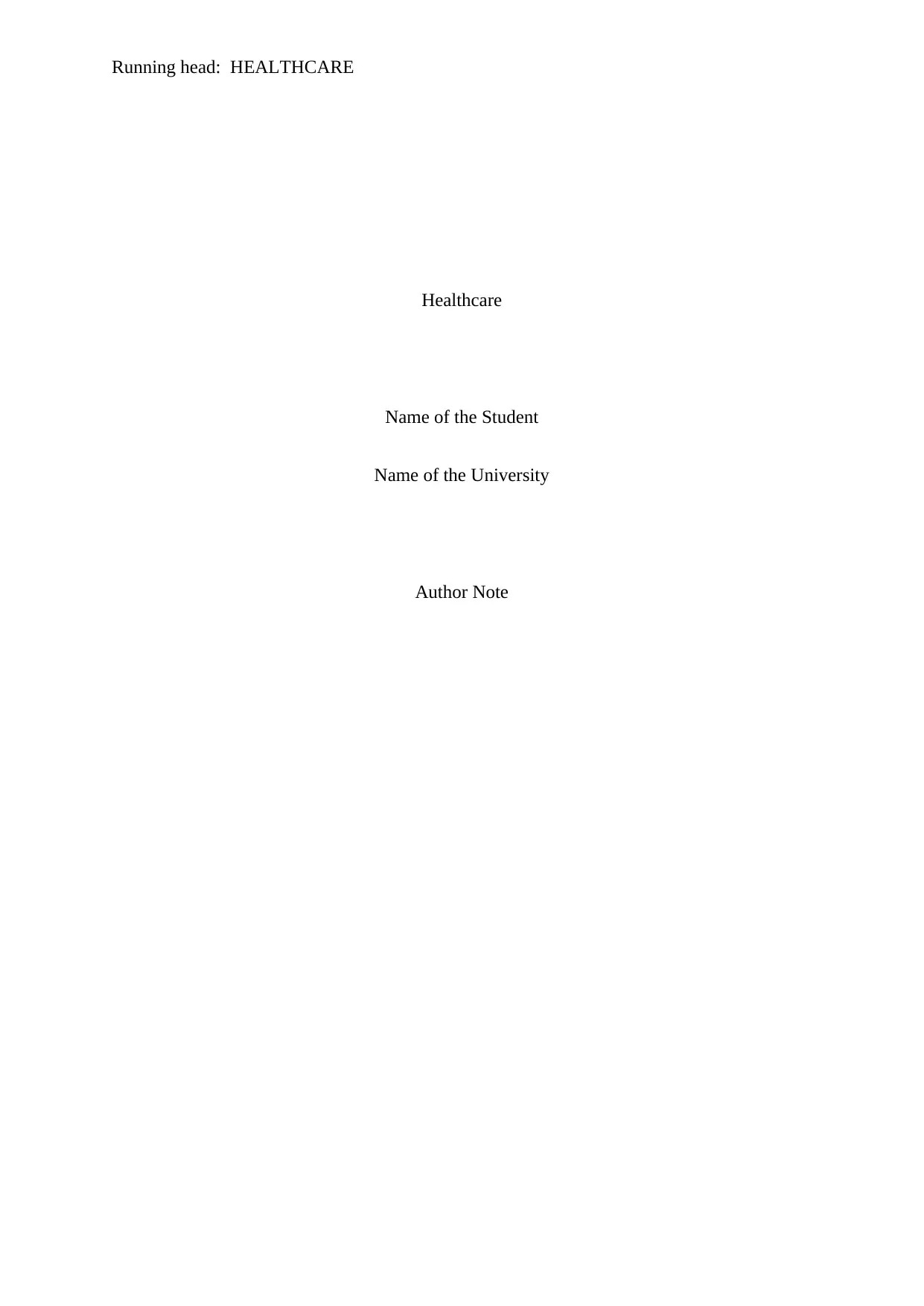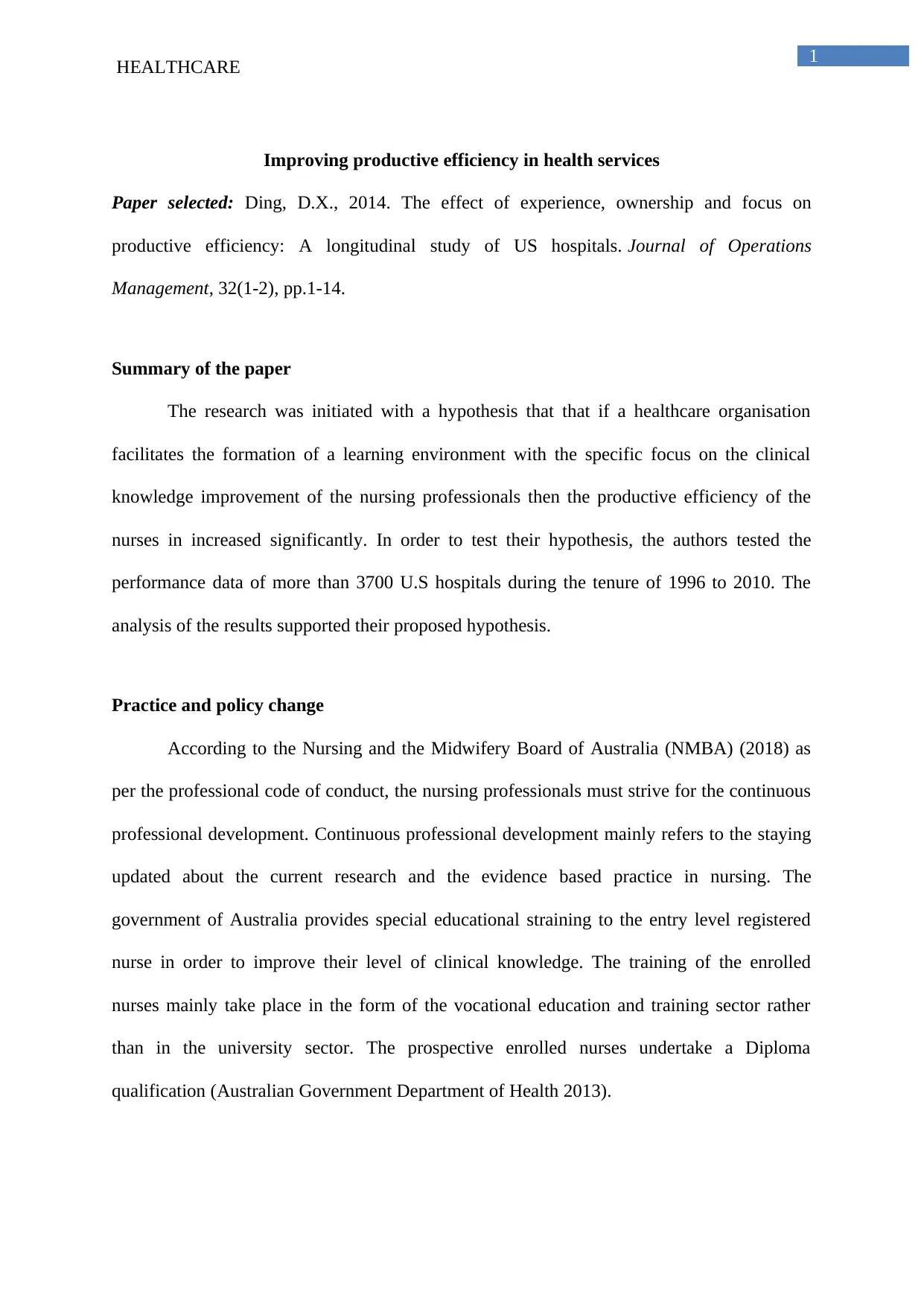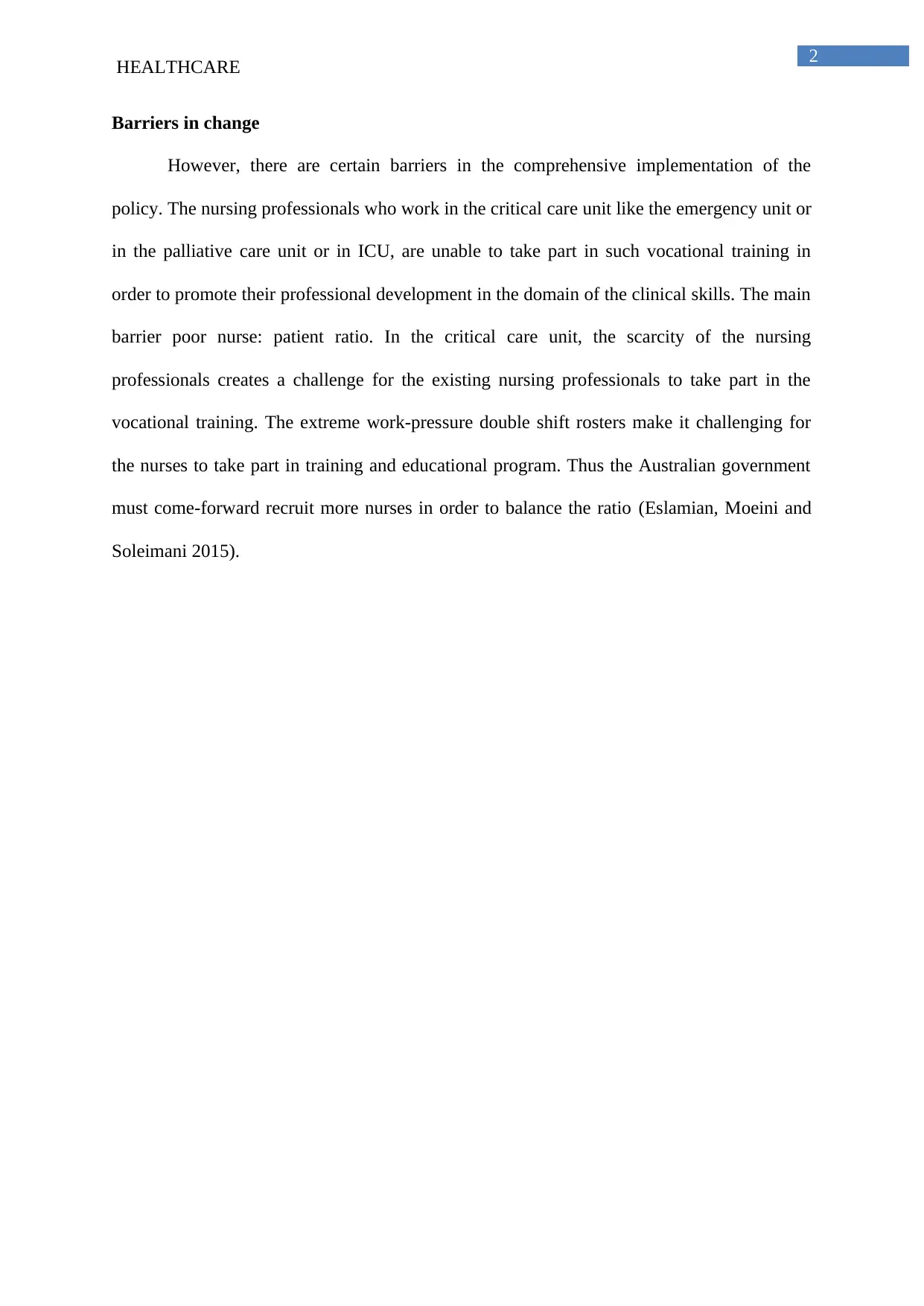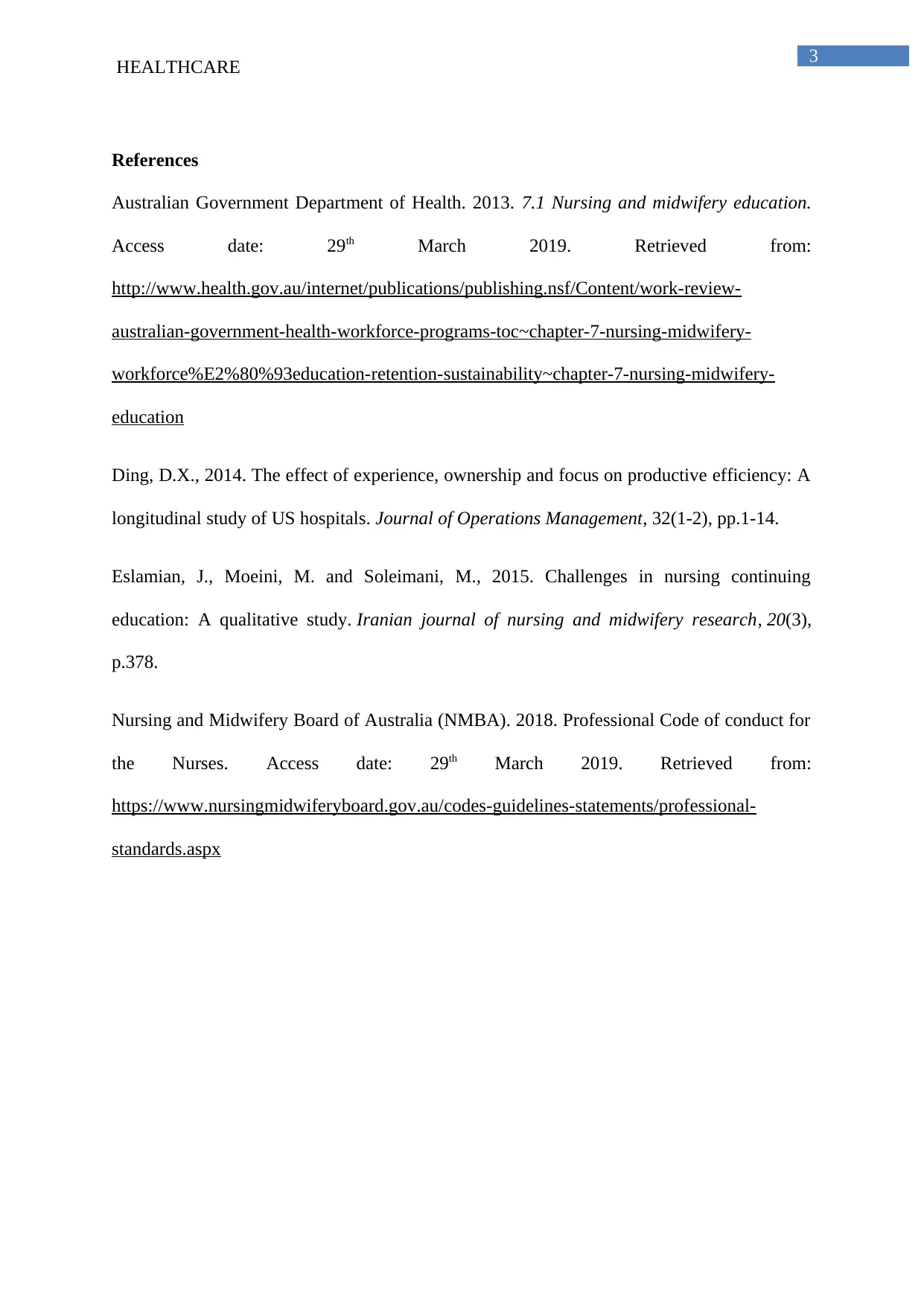Analysis of Healthcare Efficiency and Nurse Professional Development
VerifiedAdded on 2023/01/09
|4
|569
|45
Report
AI Summary
This report analyzes the factors influencing productive efficiency in healthcare, particularly focusing on the impact of nurse training and professional development. The report begins with a summary of a study that hypothesized a positive correlation between a learning environment focused on clinical knowledge improvement for nurses and increased productive efficiency. The research, analyzing data from over 3700 US hospitals between 1996 and 2010, supported this hypothesis. The report then connects these findings to the Australian healthcare system, referencing the Nursing and Midwifery Board of Australia's code of conduct, which emphasizes continuous professional development for nurses. It highlights government initiatives providing educational training to entry-level registered nurses, primarily through the vocational education and training sector. However, the report also identifies barriers to the comprehensive implementation of these policies, such as poor nurse-to-patient ratios in critical care units, which limit nurses' ability to participate in training due to heavy workloads and double shifts. The report concludes by emphasizing the need for the Australian government to recruit more nurses to balance these ratios and facilitate professional development opportunities.
1 out of 4






![[object Object]](/_next/static/media/star-bottom.7253800d.svg)